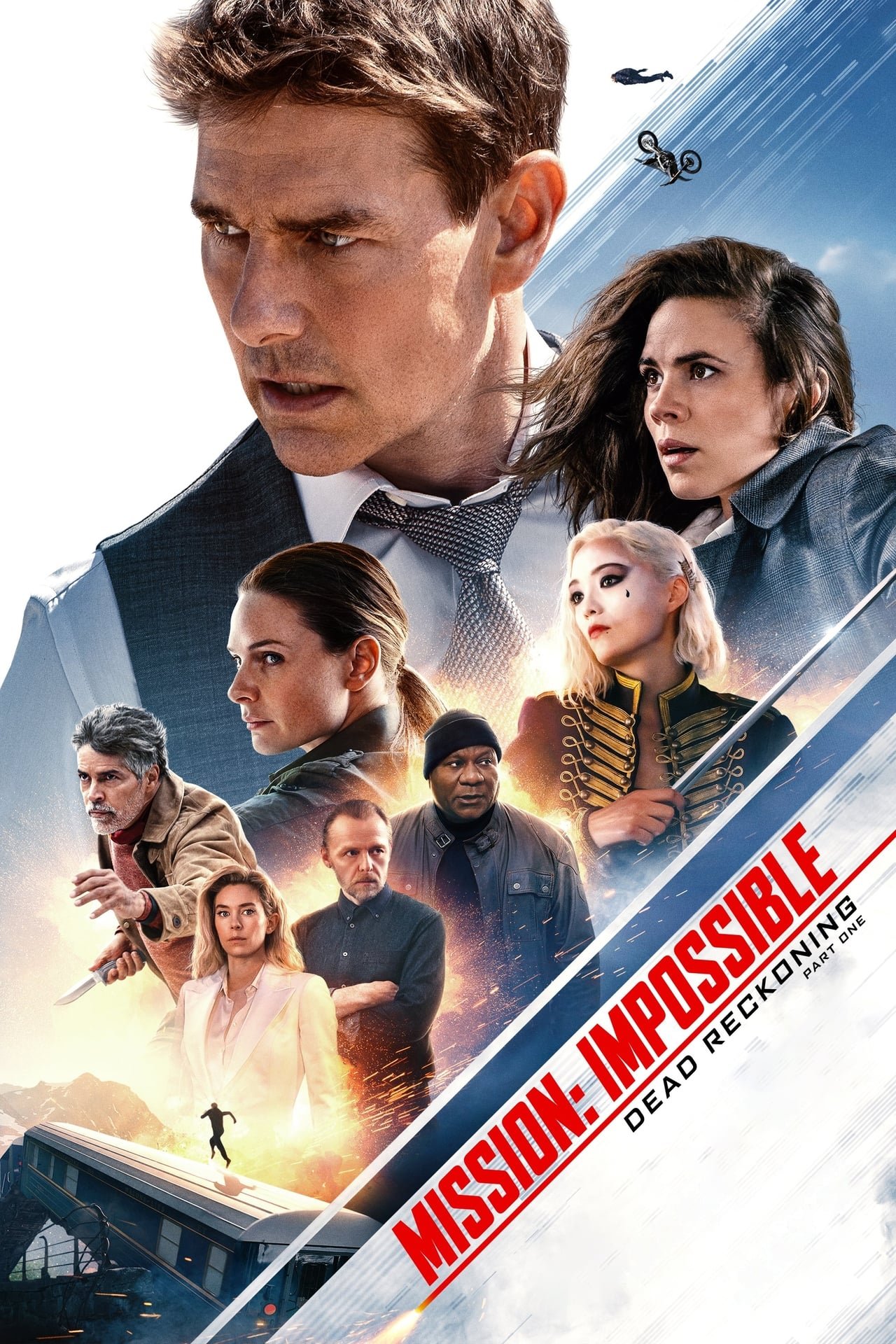Mission: Impossible - Dead Reckoning, Part One
/Tom Cruise enjoys the clear air of the Austrian Alps in Mission: Impossible—Dead Reckoning, Part One
It’s interesting, so shortly after having reviewed Indiana Jones and the Dial of Destiny, to see another movie that has so many similarities—a dangerously powerful object sought by multiple nefarious parties, action in Middle Eastern and Mediterranean locations, car chases in comically small vehicles, even a fight atop a speeding train—but that does everything so much better. The baton has clearly been passed some time ago. But I reflect on Mission: Impossible—Dead Reckoning, Part One with a twinge of melancholy. The series seems set to end with Part Two.
Well, sufficient to the day is the evil thereof. Today, let me briefly recommend the newest Mission: Impossible.
This double-barreled story begins under the ice of the Bering Sea aboard a Russian nuclear sub. The sub is lost in a spectacular and catastrophic failure owing, apparently, to computer malfunction. Or is it something more sinister?
The two keys carried by the sub’s captain and first officer, both of which are required to make a crucial system aboard the submarine work, reemerge separately on the black market. When the US government detects that one of keys is about to come up for sale, the IMF assigns Ethan Hunt to track it down and acquire it. Ethan and his old comrades Benji Dunn and Luther Stickell fly to Abu Dhabi with their usual stock of masks, gadgets, and guts and lay plans to intercept both seller and buyer.
It’s in Abu Dhabi that the plot grows more complicated through two outside interventions. First, a professional thief, Grace, lifts the key from the seller and Ethan is forced into a confrontation and uneasy collaboration with her. Second, a figure from Ethan’s past, Gabriel, appears. His purpose is unknown, but he is able to cloud his presence on all security monitoring in real time, even disappearing from Ethan’s augmented reality glasses, and his arrival coincides with Benji’s discovery of a nuclear bomb. The bomb requires vocal answers to riddles and personal questions to be disarmed.
The two keys, it turns out, relate to an AI referred to as “the Entity.” Created for sabotage and espionage and apparently responsible for the sinking of the Russian sub, the Entity is a protean self-learning program that security experts believe has become sentient. It has hacked and assimilated data from all major governments and can predict and react to seemingly all possible contingencies. Everything used against it makes it smarter. But it has one weakness: its source code. Whoever possesses the two keys Ethan is chasing will have the ability to stop the Entity—or use it.
This makes the keys more than a MacGuffin, like Mission: Impossible III’s “rabbit’s foot.” The keys, and the Entity, are the film’s One Ring. And as becomes clear over the course of the film, the sick desire for the ring and the mastery it offers infects everyone. Like Boromir, all the parties angling to acquire the keys and control the Entity want to use it. Only Ethan is determined to destroy it.
This gives a layer of thematic depth to all the action and stunts that I found surprisingly thought-provoking, not least because the film was in the works long before ChatGPT and the other Nazgûl of AI arrived. It also makes the film genuinely eerie, as the Entity can use facial recognition, create deepfakes, interfere with its perceived enemies’ electronics, and generate real people’s voices for its own purposes. (In an amusing subplot, the US government is forced to go analog, breaking out derelict pre-internet satellites, banks of old-fashioned cathode ray tube computer monitors, and armies of interns on typewriters to make hard copies of all their precious intel.) Ethan, Luther, Benji, Grace, and Ilsa Faust eventually realize that they can trust nothing that is not happening in the flesh, before their own eyes. This paranoia is a wonderful new complication in a series that has already excelled at the expected espionage twists and turns.
And Mission: Impossible—Dead Reckoning, Part One excels at everything else you’d expect it to excel at. The action is well-executed and exciting. An extended car chase through Rome keeps finding ways to reinvent itself, staying clever and exciting throughout. The dirtbike BASE jump featured in all the trailers was not a letdown. In the IMAX screening where I saw the film, the people around me lifted out of their seats and held their breath in the palpable hush following the leap over the edge. And the train chase aboard the Orient Express that Ethan is trying to reach is a brilliantly executed series of action and suspense sequences.
The plot, of course, is not resolved and the Entity and Gabriel are not defeated by the end of Dead Reckoning, Part One. But this first part tells a coherent and satisfying story that is intricately plotted and grows steadily more complicated without becoming impossible to follow. It is also surprisingly moving.
I’ve left a lot out, but Mission: Impossible—Dead Reckoning, Part One is a whole lot of movie in the best way possible. I could quibble with a few things. The first twenty minutes or so is unevenly paced and heavy on exposition and the film uses more obvious CGI than some previous installments. But these are just that: quibbles. With its complex and unusually rich plot, its genuine paranoia and ethical complications, its beautiful locations, exciting action, loathsome villains, and stable of beloved characters, this is a great new entry in the series and my favorite film of the summer so far.
Now, for Dead Reckoning, Part Two. As one of my friends said as we left the screening, “I’m going to need that to come out sooner.”






